
Milky Way over Ancient Bristlecone Pine Trees, Inyo National Forest.
Species: Bristlecone pine, Pinus longaeva
Location: Ancient Bristlecone Pine Forest, White Mountains, Inyo National Forest, California
Image ID: 29319
Species: Bristlecone pine, Pinus longaeva
Location: Ancient Bristlecone Pine Forest, White Mountains, Inyo National Forest, California
Image ID: 29319

Sand verbena wildflowers on sand dunes, Anza-Borrego Desert State Park.
Species: Sand verbena, Abronia villosa
Location: Anza-Borrego Desert State Park, Borrego Springs, California
Image ID: 30495
Species: Sand verbena, Abronia villosa
Location: Anza-Borrego Desert State Park, Borrego Springs, California
Image ID: 30495

Oak Alley Plantation and its famous shaded tunnel of 300-year-old southern live oak trees (Quercus virginiana). The plantation is now designated as a National Historic Landmark.
Species: Southern live oak, Quercus virginiana
Location: Oak Alley Plantation, Vacherie, Louisiana
Image ID: 31018
Panorama dimensions: 6564 x 17803
Species: Southern live oak, Quercus virginiana
Location: Oak Alley Plantation, Vacherie, Louisiana
Image ID: 31018
Panorama dimensions: 6564 x 17803

Aspens show fall colors in Mineral King Valley, part of Sequoia National Park in the southern Sierra Nevada, California.
Location: Mineral King, Sequoia National Park, California
Image ID: 32257
Location: Mineral King, Sequoia National Park, California
Image ID: 32257
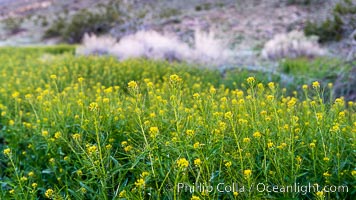
Mustard in bloom during the 2017 Superbloom, Anza Borrego.
Location: Anza-Borrego Desert State Park, Borrego Springs, California
Image ID: 33111
Location: Anza-Borrego Desert State Park, Borrego Springs, California
Image ID: 33111

California Poppies, Rancho La Costa, Carlsbad.
Species: California poppy, Eschscholzia californica
Location: Rancho La Costa, Carlsbad, California
Image ID: 33120
Species: California poppy, Eschscholzia californica
Location: Rancho La Costa, Carlsbad, California
Image ID: 33120

Wildflowers Bloom in Spring, Joshua Tree National Park.
Location: Joshua Tree National Park, California
Image ID: 33142
Location: Joshua Tree National Park, California
Image ID: 33142

Wildflowers Bloom in Spring, Joshua Tree National Park.
Location: Joshua Tree National Park, California
Image ID: 33146
Panorama dimensions: 4442 x 12771
Location: Joshua Tree National Park, California
Image ID: 33146
Panorama dimensions: 4442 x 12771

Brittlebush bloom in Anza Borrego Desert State Park, during the 2017 Superbloom.
Location: Anza-Borrego Desert State Park, Borrego Springs, California
Image ID: 33198
Location: Anza-Borrego Desert State Park, Borrego Springs, California
Image ID: 33198

Wildflowers, Rancho La Costa, Carlsbad.
Location: Rancho La Costa, Carlsbad, California
Image ID: 33206
Location: Rancho La Costa, Carlsbad, California
Image ID: 33206
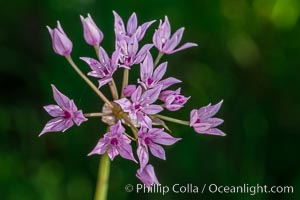
Wildflowers, Rancho La Costa, Carlsbad.
Location: Rancho La Costa, Carlsbad, California
Image ID: 33213
Location: Rancho La Costa, Carlsbad, California
Image ID: 33213

Wildflowers bloom across Carrizo Plains National Monument, during the 2017 Superbloom.
Location: Carrizo Plain National Monument, California
Image ID: 33236
Location: Carrizo Plain National Monument, California
Image ID: 33236

A Panorama of Wildflowers blooms across Carrizo Plains National Monument, during the 2017 Superbloom.
Location: Carrizo Plain National Monument, California
Image ID: 33254
Panorama dimensions: 5665 x 11153
Location: Carrizo Plain National Monument, California
Image ID: 33254
Panorama dimensions: 5665 x 11153
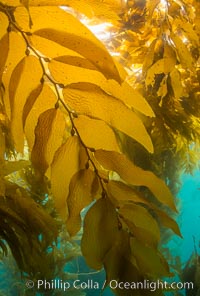
Giant kelp frond showing pneumatocysts. Small gas bladders -- pneumatocysts -- connect the kelp's stipes ("stems") to its blades ("leaves"). These bladders help elevate the kelp plant from the bottom, towards sunlight and the water's surface.
Species: Giant kelp, Macrocystis pyrifera
Location: Catalina Island, California
Image ID: 33439
Species: Giant kelp, Macrocystis pyrifera
Location: Catalina Island, California
Image ID: 33439
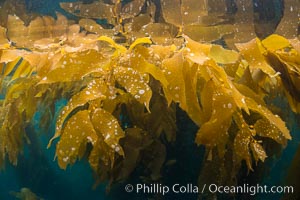
Giant kelp frond showing pneumatocysts. Small gas bladders -- pneumatocysts -- connect the kelp's stipes ("stems") to its blades ("leaves"). These bladders help elevate the kelp plant from the bottom, towards sunlight and the water's surface.
Species: Giant kelp, Macrocystis pyrifera
Location: Catalina Island, California
Image ID: 33440
Species: Giant kelp, Macrocystis pyrifera
Location: Catalina Island, California
Image ID: 33440

Sunlight streams through giant kelp forest. Giant kelp, the fastest growing plant on Earth, reaches from the rocky reef to the ocean's surface like a submarine forest.
Species: Giant kelp, Macrocystis pyrifera
Location: Catalina Island, California
Image ID: 33441
Species: Giant kelp, Macrocystis pyrifera
Location: Catalina Island, California
Image ID: 33441
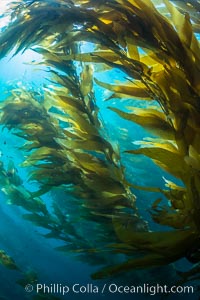
Sunlight streams through giant kelp forest. Giant kelp, the fastest growing plant on Earth, reaches from the rocky reef to the ocean's surface like a submarine forest.
Species: Giant kelp, Macrocystis pyrifera
Location: Catalina Island, California
Image ID: 33442
Species: Giant kelp, Macrocystis pyrifera
Location: Catalina Island, California
Image ID: 33442

Sunlight streams through giant kelp forest. Giant kelp, the fastest growing plant on Earth, reaches from the rocky reef to the ocean's surface like a submarine forest.
Species: Giant kelp, Macrocystis pyrifera
Location: Catalina Island, California
Image ID: 33443
Species: Giant kelp, Macrocystis pyrifera
Location: Catalina Island, California
Image ID: 33443

Sunlight streams through giant kelp forest. Giant kelp, the fastest growing plant on Earth, reaches from the rocky reef to the ocean's surface like a submarine forest.
Species: Giant kelp, Macrocystis pyrifera
Location: Catalina Island, California
Image ID: 33444
Species: Giant kelp, Macrocystis pyrifera
Location: Catalina Island, California
Image ID: 33444
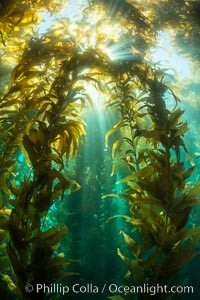
Sunlight streams through giant kelp forest. Giant kelp, the fastest growing plant on Earth, reaches from the rocky reef to the ocean's surface like a submarine forest.
Species: Giant kelp, Macrocystis pyrifera
Location: Catalina Island, California
Image ID: 33445
Species: Giant kelp, Macrocystis pyrifera
Location: Catalina Island, California
Image ID: 33445

Sunlight streams through giant kelp forest. Giant kelp, the fastest growing plant on Earth, reaches from the rocky reef to the ocean's surface like a submarine forest.
Species: Giant kelp, Macrocystis pyrifera
Location: Catalina Island, California
Image ID: 33446
Species: Giant kelp, Macrocystis pyrifera
Location: Catalina Island, California
Image ID: 33446

Kelp holdfast attaches the plant to the rocky reef on the oceans bottom. Kelp blades are visible above the holdfast, swaying in the current.
Location: Catalina Island, California
Image ID: 34212
Location: Catalina Island, California
Image ID: 34212
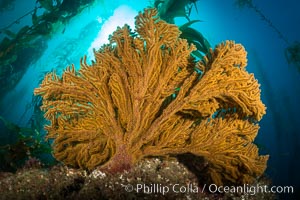
Golden gorgonian on underwater rocky reef, amid kelp forest, Catalina Island. The golden gorgonian is a filter-feeding temperate colonial species that lives on the rocky bottom at depths between 50 to 200 feet deep. Each individual polyp is a distinct animal, together they secrete calcium that forms the structure of the colony. Gorgonians are oriented at right angles to prevailing water currents to capture plankton drifting by.
Species: California golden gorgonian, Muricea californica
Location: Catalina Island, California
Image ID: 34219
Species: California golden gorgonian, Muricea californica
Location: Catalina Island, California
Image ID: 34219

Desert Lily Hersperocallis undulata, Anza Borrego Desert State Park.
Species: Desert lily, Hesperocallis undulata
Location: Anza-Borrego Desert State Park, Borrego Springs, California
Image ID: 35194
Species: Desert lily, Hesperocallis undulata
Location: Anza-Borrego Desert State Park, Borrego Springs, California
Image ID: 35194

Desert Sunflower Blooming Across Anza Borrego Desert State Park.
Species: Desert Sunflower, Geraea canescens
Location: Anza-Borrego Desert State Park, Borrego Springs, California
Image ID: 35196
Species: Desert Sunflower, Geraea canescens
Location: Anza-Borrego Desert State Park, Borrego Springs, California
Image ID: 35196
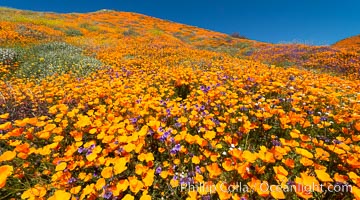
California Poppies in Bloom, Elsinore.
Species: California poppy, Eschscholzia californica
Location: Elsinore, California
Image ID: 35230
Species: California poppy, Eschscholzia californica
Location: Elsinore, California
Image ID: 35230

Desert Lily Blooming in Anza Borrego Desert State Park. While the Desert Lily is typically an uncommon or rare flower, in Spring 2024 it was present in enormous numbers. 2024 was the Year of the Desert Lily.
Species: Desert Lily, Hesperocallis undulata
Location: Anza-Borrego Desert State Park, Borrego Springs, California
Image ID: 40293
Species: Desert Lily, Hesperocallis undulata
Location: Anza-Borrego Desert State Park, Borrego Springs, California
Image ID: 40293

Milky Way over Ancient Bristlecone Pine Trees, Inyo National Forest.
Species: Bristlecone pine, Pinus longaeva
Location: Ancient Bristlecone Pine Forest, White Mountains, Inyo National Forest, California
Image ID: 29325
Species: Bristlecone pine, Pinus longaeva
Location: Ancient Bristlecone Pine Forest, White Mountains, Inyo National Forest, California
Image ID: 29325

Garibaldi and California golden gorgonian on underwater rocky reef, San Clemente Island. The golden gorgonian is a filter-feeding temperate colonial species that lives on the rocky bottom at depths between 50 to 200 feet deep. Each individual polyp is a distinct animal, together they secrete calcium that forms the structure of the colony. Gorgonians are oriented at right angles to prevailing water currents to capture plankton drifting by.
Species: California golden gorgonian, Garibaldi, Hypsypops rubicundus, Muricea californica
Location: San Clemente Island, California
Image ID: 30864
Species: California golden gorgonian, Garibaldi, Hypsypops rubicundus, Muricea californica
Location: San Clemente Island, California
Image ID: 30864
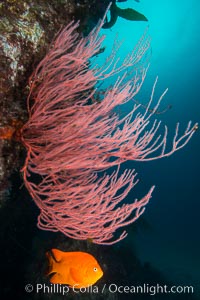
Garibaldi and red gorgonian on rocky reef, below kelp forest, underwater. The red gorgonian is a filter-feeding temperate colonial species that lives on the rocky bottom at depths between 50 to 200 feet deep. Gorgonians are oriented at right angles to prevailing water currents to capture plankton drifting by.
Species: Garibaldi, Red gorgonian, Hypsypops rubicundus, Leptogorgia chilensischilensis, Lophogorgia chilensis
Location: San Clemente Island, California
Image ID: 30870
Species: Garibaldi, Red gorgonian, Hypsypops rubicundus, Leptogorgia chilensischilensis, Lophogorgia chilensis
Location: San Clemente Island, California
Image ID: 30870